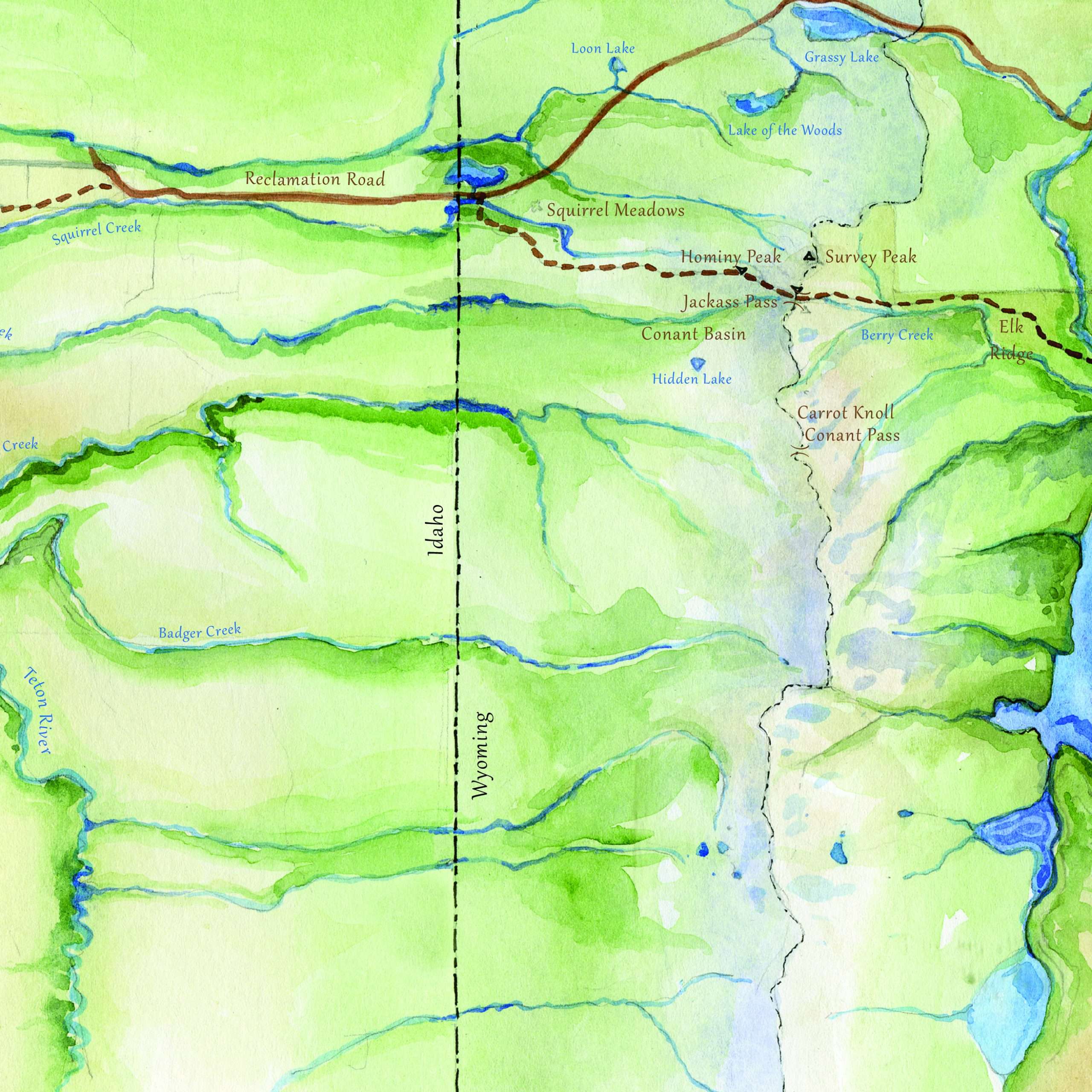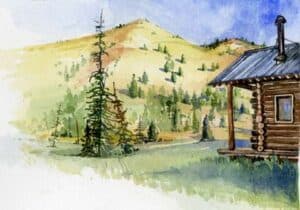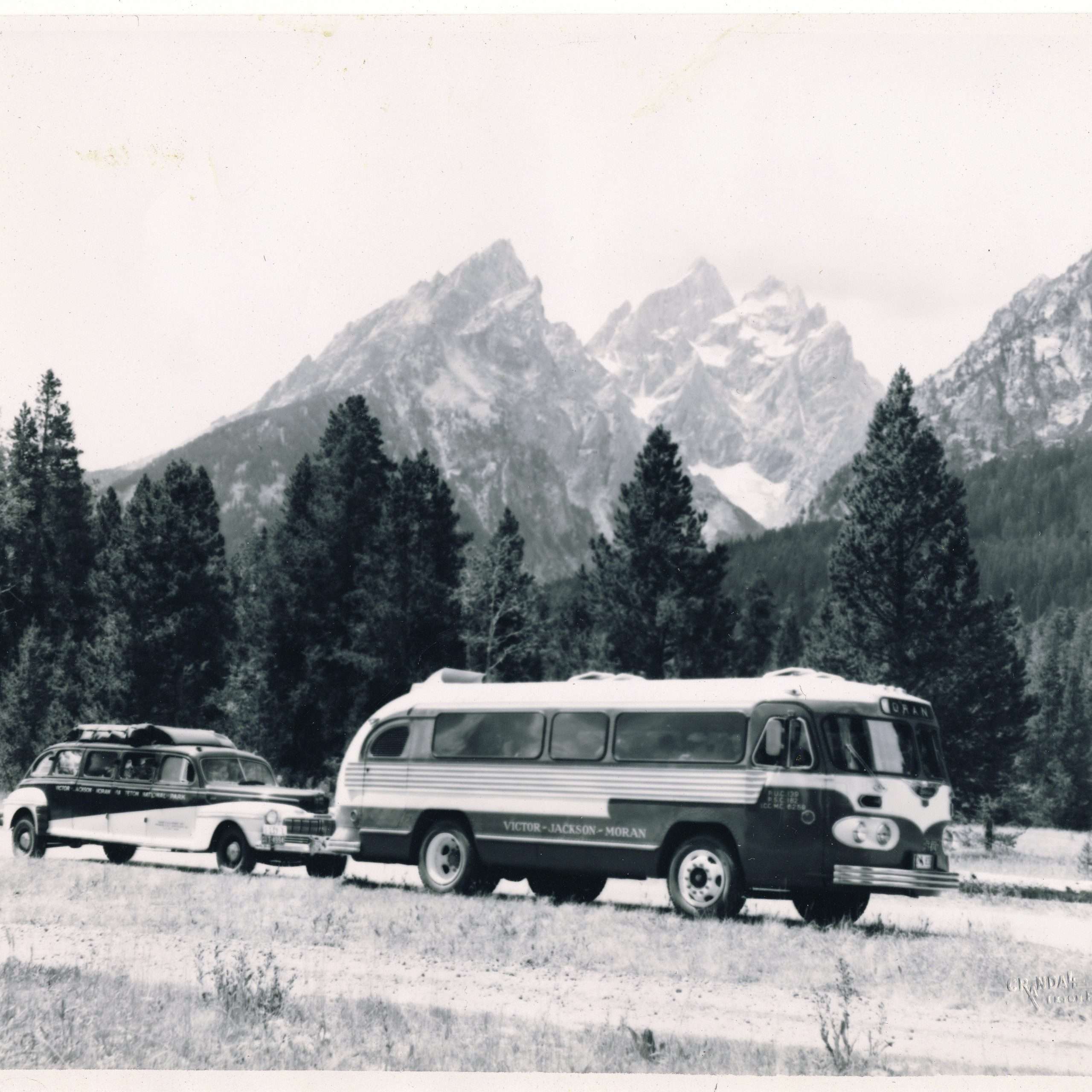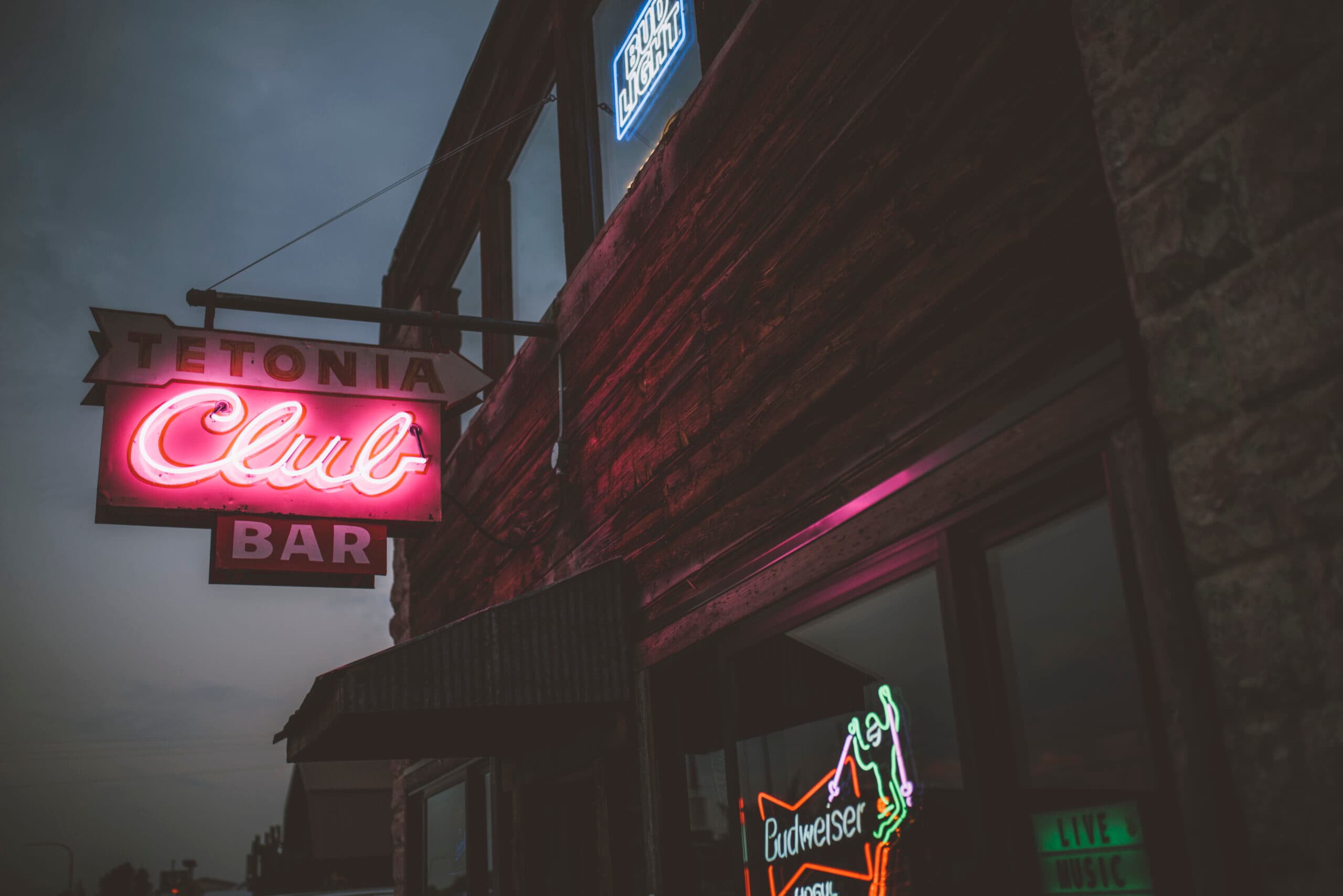Conant Pass Trail

Owen Wister, in his 1902 Western classic The Virginian, penned: “Next day we swung southward from what is known as the Conant Trail, and headed for the shortcut through the Tetons which is known to but a few, Bitch Creek was the name …”
Not much has changed. Although romanticized in local lore and recalled in annals, it remains a trail known only to a few.
More than a path, the Conant Trail was once an important route across the northern end of the Teton Range, connecting Yellowstone and northern Jackson Hole to Teton Valley—and to the closest railheads and the outside world. Historic accounts of the route rival those told of Teton Pass.
On the Jackson Hole side, the trail crossed the Snake River three miles above the natural Jackson Lake, just north of Berry Creek (the historic ford has been inundated by Jackson Lake dam waters). Heading west, it passed north of Elk Ridge following the open, park-like glades up Berry Creek south of Survey Peak, and over what used to be called Conant Pass.
Historic Conant Pass, elevation 8,520 feet, is shown on maps nowadays as Jackass Pass. The name Conant has been misapplied by government cartographers to a pass south of Carrot Knoll. The Ashton-Moran freight road—an early wagon route; and after 1910, an engineered road—has sometimes been confused with the Conant Trail, too. They overlap in part around Squirrel Meadows, but the two are not the same.
On the west slope, the segment from Conant (Jackass) Pass west to Squirrel, Idaho, is the historic Conant Trail. Long ago, the way led on from there to the Snake River Plain and Fort Hall; later, it was used to access the 1879 railhead at Market Lake (today’s Roberts, north of Idaho Falls). In the more recent historic past, a wagon road from Squirrel connected to the 1899 railhead at St. Anthony, with a thrice-weekly stagecoach running between the two.
A route variation from the above is that east of Hominy Peak in Wyoming, a connecting trail branching south to Conant Basin, past Hidden Lake, and down Conant Creek; and, historically important, another that diverges to Bitch Creek, leading into the north end of Teton Valley. These trails are often loosely spoken of as part of the Conant Trail, too, since they also connect to the pass.

Branded the “Horse Thief Trail” by Wister, the Conant Trail was used by Native Americans, mountain men, outlaws, game poachers, elk tuskers (hunters who illegally killed elk for their valuable eye-teeth ivory), outfitters and sportsmen, and early-day northern Jackson Hole settlers. A local name for the Bitch Creek segment is the “Poacher’s Trail,” recalling a time when Teton Basin families relied year-round on game meat and market hunting for subsistence and livelihood, an era when Wyoming had game laws but Idaho did not.
In Tetonia resident Jim Hardee’s Pierre’s Hole!, Jedediah Smith’s 1824 band of trappers is said to have utilized this “well-used Indian trail”; and William Sublette, in 1826, recorded “circling around the Tetons into Jackson Hole.”
Mountain man Osborne Russell, in Journal of a Trapper, writes that he and his companion—wounded and without possessions, following an 1839 skirmish with Blackfeet Indians near Yellowstone Lake—made their escape by this route: “near to Jacksons Lake on the west side … [we] took up a small branch in a West direction …” After crossing the Teton Range they descended to the confluence of the Henry’s Fork and the Snake River, then continued south to Fort Hall.
The Conant Trail was named by Richard “Beaver Dick” Leigh, credited as the first Euro-American to take up permanent residence in the shadow of the Tetons. Leigh named the pass, trail, and creek after Al Conant, another early Teton Valley inhabitant, who, Leigh claimed, in 1865 nearly drowned in his namesake creek.
Leigh and his family commonly used the Conant Pass Trail to travel between Teton Valley and Jackson Hole. The route accessed the Jackson Lake Meadows at the head of the lake (before construction of the Jackson Lake dam). The large meadows served as a traditional Native American encampment site used for eons. Leigh, who reportedly maintained a cabin at the meadows, also cached teepee poles at locations along the trail for setting up temporary shelter when needed. Leigh was a promoter for the trail to be made into a stagecoach road.
The general area was designated part of the Teton Forest Reserve in 1897; when the Jackson Hole National Monument was established in 1943, it came under the purview of the National Park Service. The agencies built and maintained a number of snowshoe or patrol cabins along the route. A Forest Service cabin listed on the National Register of Historic Places still exists—and remains in use through their rental program—where the trail passed through Squirrel Creek Meadows. The Park Service continues to maintain patrol cabins in upper and lower Berry Creek.
Others built cabins along the route, too. The Berry for whom the creek was named had a squatter’s cabin near the stream’s mouth in 1903; and, in 1904, an eight-by-eight-foot snowshoe cabin sat midway down Berry Creek. A talc mine with associated cabins also once existed near Berry Creek, and both were accessed by the trail. And still another cabin at Survey Peak is believed to have served as a Forest Service fire lookout station. A telephone line ran to it along Berry Creek. Considerable all-season use of the trail occurred during that era.
In the latter part of the nineteenth century, Edwin Trafton (aka Ed Harrington), Teton Valley’s most infamous early-day resident, used the trail to access a cabin he had on the east side of Jackson Lake. Trafton and his compadres reportedly used the route to move stolen livestock, earning it the “Outlaw Trail” reputation. Wister, it is believed, learned about the trail through interviews conducted with Trafton.
Trafton’s grandson, John Watson, noted in The Real Virginian, “Farmers bought the livestock little concerned about where it came from as long as they got a bill of sale proving they hadn’t done the stealing.”
Early-day Wyoming game wardens were well aware of the problems the Conant Trail posed for enforcement. In A Community of Scalawags, Renegades, Discharged Soldiers and Predestined Stinkers?, Kenneth and Lenore Diem describe it as an easy way for poachers and tuskers to exit Jackson Hole and Yellowstone Park, with illegal booty, and enter Idaho, where at the time there were no game laws or wardens.
After convicted Yellowstone National Park game poacher and tusker Charles Purdy served out his sentence in the Yellowstone Guardhouse at the beginning of the twentieth century, he filed a claim under the 1890 mining law at Loon Lake and built a cabin there. Locally admired in the nearby Mormon settlements in Idaho for his outdoor survival skills, Purdy became known for his winter treks to Moran, Wyoming, across the Conant Trail on homemade ten-foot skis.
The trail was used not only by outlaws and poachers. Legitimate settlers in northern Jackson Hole moved supplies and livestock across it. Settler John “Jack” Shive (best known as a member of the Owen-Spalding party that summited the Grand Teton in 1898) brought seventy-five cows, five saddle horses, and four pack horses into Jackson Hole over the trail in 1896. A daughter wrote about the experience: “We crossed the northern end of the Teton Range by the Conant Trail route. For two whole days we wound up and over the mountains through pine woods, never seeing the lead cattle except when we rounded up for noon or night.”
John Sargent, a controversial early-day Jackson Hole figure, along with his family, settled and built his ten-room lodge Marymere at Sargent’s Bay (north of Colter Bay) in 1898. Their supplies and expensive furnishings were mule packed in over the Conant Trail, including a pool table, Victrola, classical music records, and, remarkably, a baby grand piano. The hired lodge builders came from Ashton, Idaho, undoubtedly over the trail, too.
Literate and from a well-to-do Eastern family, Sargent was in Western parlance a “remittance man.” He and his family made frequent trips across Conant Pass, sometimes in order to winter outside of Jackson Hole.
The importance and use of the Conant Trail pretty much came to a close when, early in the twentieth century, the Reclamation Road was constructed and the Jackson Lake Dam flooded the river ford accessing the trail. It also lay to rest proposals for constructing a road from Idaho across Conant Pass. Instead, we are left today with remote backcountry in the northern Teton Range prized for its wilderness habitat.
Considering hiking the trail? Be forewarned, one park ranger contends that there is “one grizzly bear for each mile of trail.”
And do you think stories of outlaws and poachers using this trail are merely worn Old West tales? Think again. In 1980, park rangers busted an Idaho outfitter and his client for illegally hunting and killing elk in Grand Teton National Park. Likewise, in 1985 a Jackson Hole outfitter and his clients, after a Wild West horseback pursuit on the trail, were apprehended for unlawfully killing elk in the park. In both cases, for access into and egress out of the park the poachers used … you guessed it, the Conant Trail.




